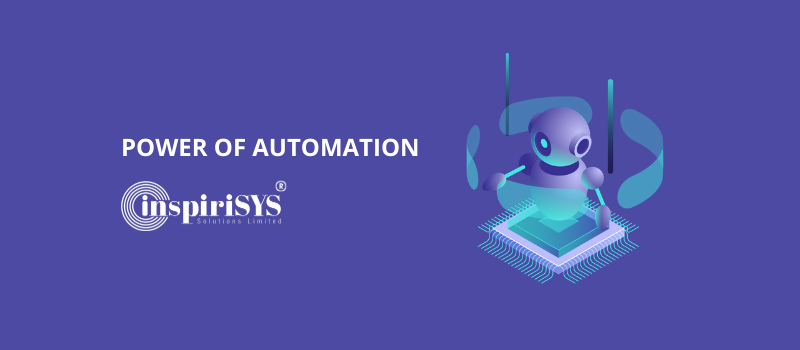By incorporating Robotic Process Automation in banking and finance, a wide-range of back-office processes can be automated, resulting in improved operational efficiency.
The COVID-19 pandemic has left most of the banks across the globe with no option but to find all possible ways to cut costs and improve their revenue as much as possible. While trying to keep up with the altered customer demands, many banks are adopting automation technologies like RPA to disrupt mundane internal operations.
Robotic Process Automation (RPA) is a technology that mimics human actions to eliminate manual and repetitive tasks. It can be used in fetching data from multiple systems, integrating with legacy systems, and validating data from the paper-based form. It offers the potential to change the financial institutes’ working model by automating back-office processes across geographically dispersed branches.
Many critical internal operations in banking and financial services such as account opening, fraud claims, KYC, report generation, customer services as well as compliance procedures can be effectively automated to reduce the operational cost. This can help banks to drive better turnaround on delivery, improve customer experience, and simplify transactions. This blog outlines the banking and financial operations that can be seamlessly automated with RPA.
Account Opening
 The legacy process to open a bank account involves mundane repetitive tasks including data submission, complex documentation, reconciliation against 100+ rules, document verification, and system records. Robotic process automation deployment in account opening procedure can help banks to eliminate precise manual data entry, time spent on ineffective processes and manual errors. With RPA, Optical Character Recognition automatically converts images to text, cognitive bots collect details from personal identification and compare data with rules for effective verification.
The legacy process to open a bank account involves mundane repetitive tasks including data submission, complex documentation, reconciliation against 100+ rules, document verification, and system records. Robotic process automation deployment in account opening procedure can help banks to eliminate precise manual data entry, time spent on ineffective processes and manual errors. With RPA, Optical Character Recognition automatically converts images to text, cognitive bots collect details from personal identification and compare data with rules for effective verification.
Insurance Claims
 The Machine Learning capabilities of RPA creates rules that are unique to your business. For instance, the process of pre-scanning a claim and verifying its validity before assessing risk factors can be automated. Only then, your claims handler needs to intervene. RPA is not just used to detect current frauds in the insurance claims, but to prevent them from occurring in the future. With ML’s advanced analytics, RPA engine deployed in insurance claims process can learn, predict, act, and explain. It operates automatically, without being programmed or monitored. It learns by analysing existing data before applying the outcomes to new data to create deep-dive business insights.
The Machine Learning capabilities of RPA creates rules that are unique to your business. For instance, the process of pre-scanning a claim and verifying its validity before assessing risk factors can be automated. Only then, your claims handler needs to intervene. RPA is not just used to detect current frauds in the insurance claims, but to prevent them from occurring in the future. With ML’s advanced analytics, RPA engine deployed in insurance claims process can learn, predict, act, and explain. It operates automatically, without being programmed or monitored. It learns by analysing existing data before applying the outcomes to new data to create deep-dive business insights.
KYC Process

RPA in the KYC process can be used to check millions of customer profiles, documents, and detect fraudulent data, and also find the expiry dates of passport or other KYC documents. It enables banks to reduce 70% of manual efforts for KYC Verification results in time-saving and cost-cutting. It can manage the entire KYC processing cycle including receipt of documents, scanning, processing, validation, documents management, retrieval, and report generation.
Report Generation
 Report generation is an essential activity in a modern-day organization. Especially banks must generate reports as part of compliance and present it to the stakeholders to show the banks’ performance. Ensuring error-free reporting is vital for a bank to maintain its reputation. The usability of RPA in report generation assists banks with actual data in generating reports. It collects information from various sources, validates, arranges in an understandable format, and schedules to send to multiple sources. With automatic periodic reporting, it helps financial institutes to decreases manual labour and increases customer satisfaction.
Report generation is an essential activity in a modern-day organization. Especially banks must generate reports as part of compliance and present it to the stakeholders to show the banks’ performance. Ensuring error-free reporting is vital for a bank to maintain its reputation. The usability of RPA in report generation assists banks with actual data in generating reports. It collects information from various sources, validates, arranges in an understandable format, and schedules to send to multiple sources. With automatic periodic reporting, it helps financial institutes to decreases manual labour and increases customer satisfaction.
Customer Service
 Banks handle multiple queries such as loans and account enquiry at a time to help customers with the right information. In a short span of time, it is difficult for customer service teams to handle all those queries. Robotic Process Automation is a vital technology to handle the challenges in customer service. With RPA implementation in customer service, banks can reduce the waiting time of customers, improve customer relationships, reduce the amount of time spent to check customer details from disparate systems and focus on high priority queries.
Banks handle multiple queries such as loans and account enquiry at a time to help customers with the right information. In a short span of time, it is difficult for customer service teams to handle all those queries. Robotic Process Automation is a vital technology to handle the challenges in customer service. With RPA implementation in customer service, banks can reduce the waiting time of customers, improve customer relationships, reduce the amount of time spent to check customer details from disparate systems and focus on high priority queries.
Compliance
 Regulatory complexity is one of the top challenges faced by modern banks today. They always try to have compliance under the control. A survey by Forbes states that banking regulatory costs will rise from 4% to 10% of banking revenue by 2021. Some banks hire more people to handle the monotonous regulatory process. But on the flip side, it is an inefficient process. Banks should evaluate their technology investments and spend more on emerging technologies like RPA to increase their operational efficiency in terms of compliance. The attended, unattended and hybrid model bots of RPA can seamlessly automate the complex compliance workflows and can work 24/7 to meet the regulatory demands of the financial sector.
Regulatory complexity is one of the top challenges faced by modern banks today. They always try to have compliance under the control. A survey by Forbes states that banking regulatory costs will rise from 4% to 10% of banking revenue by 2021. Some banks hire more people to handle the monotonous regulatory process. But on the flip side, it is an inefficient process. Banks should evaluate their technology investments and spend more on emerging technologies like RPA to increase their operational efficiency in terms of compliance. The attended, unattended and hybrid model bots of RPA can seamlessly automate the complex compliance workflows and can work 24/7 to meet the regulatory demands of the financial sector.
Accounts Payable

The accounts payable process involves the validation of vendor information followed by payment processing. It is not a complicated process and thus it stays a mundane task in the system. But accounts payable is a kind of task that RPA can automate and let the employees focus on high priority tasks. The software robots can fetch the vendor information and with Optical Character Recognition, they read and validate the data to process payment and notify executives whenever discrepancies are encountered.
Robotic Process Automation accelerates time to value and reduce human error to enable smooth transactions. It is easy to integrate and scalable based on your banks’ operational requirements. With RPA solution, the customers can engage with your digital platforms without any human interactions to enable customer satisfaction.
Download RPA Implementation Process Infographic







